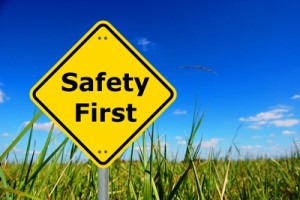 “An ounce of prevention is worth a pound of cure.” Benjamin Franklin
“An ounce of prevention is worth a pound of cure.” Benjamin Franklin
When a lack of safety training causes things to go wrong in the workplace the results can be catastrophic – even deadly. Ensuring that’s never the case is a decision made by those with the authority to see it through – leaders who understand that safety isn’t something to take for granted or assume it is understood.
Not everyone shares this view, of course. Training is expensive, and there are certainly companies out there who prefer to take shortcuts, leaving employees to learn on the job – often the hard way.
But that’s exactly the problem with cutting corners and shrugging off training; if you don’t pay for it now, you’ll surely pay for it later in OSHA fines, workmen’s comp, or even legal settlements. Training may be a cost center, but nothing hurts as acutely as error-driven hazards.
Just ask BP. They took the brunt of the PR hit when an explosion on the Deepwater Horizon, the Transocean drilling rig the oil company was leasing, caused a massive oil spill in the Gulf of Mexico in April 2010. It was the largest oil spill in U.S. history, and cost the lives of 11 workers aboard the rig. And it didn’t have to go that way.
According to the New York Times,
“A confidential survey of workers on the Deepwater Horizon in the weeks before the oil rig exploded showed that many of them were concerned about safety practices and feared reprisals if they reported mistakes or other problems.”
The survey, commissioned by Transocean, clearly wasn’t taken seriously enough. Not to mention, Transocean’s safety culture had workers worried for the wrong reasons: “I’m petrified of dropping anything from heights not because I’m afraid of hurting anyone (the area is cordoned off), but because I’m afraid of getting fired,’ one worker wrote.”
Simulated Training Allows for Human Error Without Consequence
Safety training is important – as is training safely.
In March 2013 seven U.S. Marines were killed, and eight wounded, during a live-fire training exercise. According to USA Today, the investigation into the incident “…concluded that four factors contributed to the tragedy: inadequate training and preparation for the complexity of the exercise; improper mortar gunnery commands and firing procedures; a ‘perceived sense of urgency and resultant haste’ within the mortar section during the exercise; and a systemic lack of supervision of the mortar section during the exercise and in the months prior to it.”
Tragedies happen, but it’s hard not to think that simulation training in this case could have saved lives.
And though human error is unpredictable, the beauty of simulation training is that is can allow trainees to safely experience extreme conditions and practice the behaviors needed in high-stress environments frequently enough that they become ingrained.
Making Simulations Stick
For example, medical facilities like Rhode Island Hospital in Providence have used simulation training to keep medical professionals proficient in life-saving procedures that occur only rarely – like pediatric resuscitation.
This speaks to the real benefit of simulation training: providing ongoing support for skills that are important to keep fresh. Because safety should never just be a “classroom lesson,” but a recurring theme built into everyday tasks.
 Checklists are one way that happens. Think of a pilot going through a pre-flight check with the co-pilot. With so much riding on the proper functioning of the plane’s equipment (not to mention their own expertise), nothing is ever left to chance. And it needn’t be in your industry either!
Checklists are one way that happens. Think of a pilot going through a pre-flight check with the co-pilot. With so much riding on the proper functioning of the plane’s equipment (not to mention their own expertise), nothing is ever left to chance. And it needn’t be in your industry either!
Occupational safety guru Phil LaDuke offers 14 Points of Workplace Safety, and we offer a checklist beyond the clipboard – visual, interactive, and available any time to keep your employees up-to-date on any aspect of their jobs that require review. Here’s a peek at it in action:
How’s that for real-time job assistance? That’s the Heartwood way. We view training, evaluation, and daily performance as pieces of a well-balanced puzzle that allows workers to be constantly supported in their efforts. Our “Training, Testing, Checklist” approach offers visual, interactive and portable training that can be adjusted to the skill level of each trainee, while ultimately providing the same required training to all.
And safety is woven in to the fabric of each phase:
1. Training via 3D interactive simulation that means trainees aren’t dealing with reality until they’re ready.
2. Testing of skills at desired intervals to be sure everything is understood prior to practical application.
3. And finally, a visual, real-time checklist to guide workers at every level so they never have to gamble safety against their ability to remember a task.
Time to Rethink That Choice
Make the choice to commit to safety, and explore our 3D Interactive Training solutions as part of that choice. Isn’t keeping your employees safe throughout the learning phase of their jobs, and beyond, worth it? Contact us here to discuss your safety and training initiatives!


